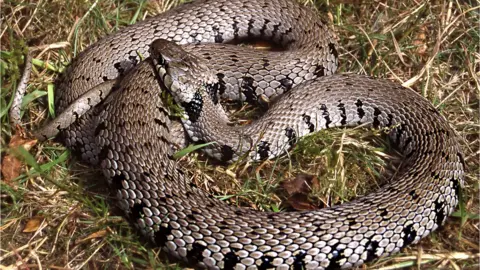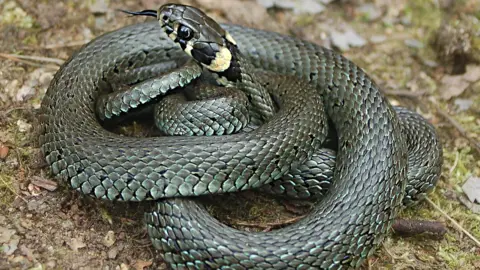New grass snake identified in the UK
 Wolfgang Bohme/Senckenberg Research Institute
Wolfgang Bohme/Senckenberg Research InstituteA new type of snake has been identified in the UK after genetic testing re-classified its native grass snakes.
Scientists say the common or eastern grass snake, Natrix natrix, is actually called the barred grass snake, Natrix helvetica.
Grass snakes are protected under the Wildlife and Countryside Act making it illegal to injure or kill them.
The other two snakes native to the UK are the smooth snake and the adder, which is venomous.
The barred grass snake is normally found in lowland regions in the south of England. The snakes can be more than a metre (3ft) long, are found near water and eat mainly amphibians like frogs and newts.
The newly distinguished snake is grey, not olive green like the N. natrix and does not have the same bright yellow collar.
The snake is also found in Switzerland, Italy and France and also has been seen in western Germany.
 Melita Vamberger/Senckenberg Research Institute
Melita Vamberger/Senckenberg Research InstituteAlong its entire length the N. helvetica has black stripes, which on the common grass snake are barely noticeable.
The Senckenberg Research Institute in Germany led the study into the genetics of more than 1,600 grass snakes.
Professor Uwe Fritz said: "We discovered that the barred grass snake, previously considered a subspecies, is in fact a distinct species.
"We now have to pay close attention to which species of grass snake is involved in each case, in order to be able to assess whether one of them may be more threatened than previously thought."
Correction 31 August 2017: This story has been updated to clarify that following genetic testing the total number of snake species in the UK remains at three, but the former 'grass snake' has a new name.
